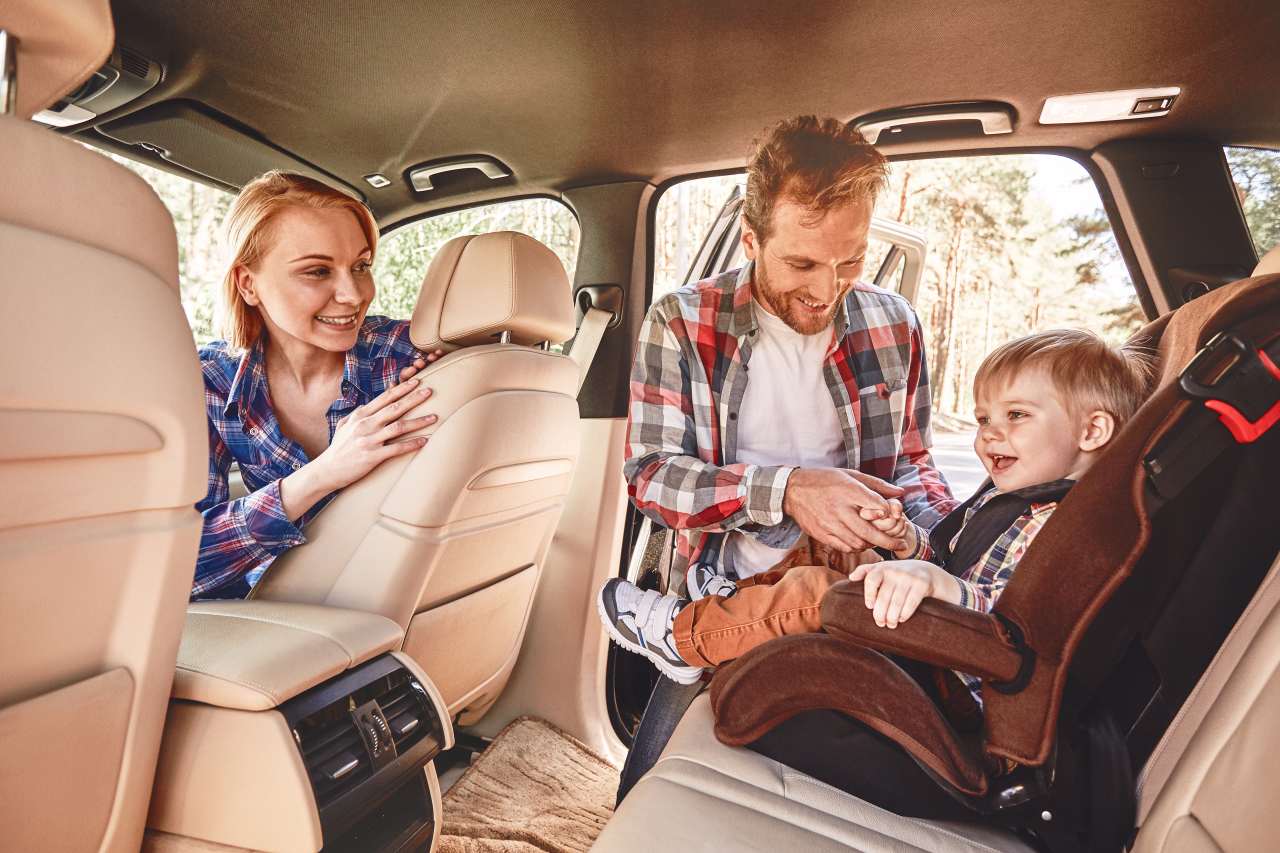GWM is on a new-product blitz, not just launching a range of new vehicles, but a range of new technologies, too.
This is where the Haval Raptor comes in. It might share the same name as a particularly famous Ford, and it may look like a Land Rover Defender rival, but it has much more mainstream intentions in the family-oriented mid-size SUV space.
So what is it, where does it sit in the range, and what does it mean for GWM's future line-up in Australia? We were granted a brief preview drive in China to find out.

What is the GWM Haval Raptor?
The Raptor is a five-seat mid-size SUV which sits alongside the Haval H6 in the wider line-up. At 4800mm long, 1950mm wide and 1843mm tall, it’s a size up from the popular H6, but while it shares similar dimensions with the Tank 300, it rides on a monocoque, rather than a ladder-frame, chassis.
In this sense, it’s probably better to think of the Raptor as more of a rival to the new hybrid Subaru Forester, or something like a Jeep Compass, rather than a true hardcore off-roader, although it has a few tricks up its sleeve on the tech front which we’ll touch on later.
Importantly it also shares its wild off-road-inspired design language with the larger H9, complete with a blocky face, retro-style headlights and more, setting it apart from both the Tank range and existing Haval products.
Is the GWM Haval Raptor coming to Australia?
The short answer is probably. The longer answer is GWM Australia told CarsGuide at the drive event the Raptor is under consideration, potentially as the future of the H7 nameplate.
If you just remembered that the Haval H7 is only just arriving this year, you’d be right. And that’s why we might not get this exact version of the Raptor, but some sort of future update.
We asked GWM whether this addition to the line-up would mean too many mid-size SUVs causing buyer confusion.
Executives said the Raptor features the brand’s latest technology. Specifically it features the brand’s latest Hi4 plug-in hybrid drivetrain as opposed to the precursor hybrid systems currently offered in the H6 GT. This system is all-wheel-drive only, fitting with GWM’s strategy of moving to all-wheel drive for its entire SUV range over time.
How much does the Haval Raptor cost?
The Raptor starts from the equivalent of roughly A$36,000 before on-road costs in its Chinese home market, and is offered in three variants across two hybrid battery sizes.
As always, expect to add some 20 per cent to the cost by the time the car is delivered in Australia. The Haval H6, for example, costs over $7000 more in Australia than it does in China (even when you compare like-for-like trims), so expect it to start from at least $50,000 once it lands on our shores. More if the brand chooses to only import higher grades.
The base Air is equipped with a battery providing 102km of electric driving range, while the mid-spec Pro is available with either the 102km battery or 145km battery. Finally the top-spec Cross Country is only available with the 145km battery.
Keep in mind, these ranges are calculated to the more lenient CLTC cycle, so expect around 100km of driving range for the top-spec car, like the one we tested.
The top-spec Cross Country version we had a look at wears a Chinese price-tag in the realm of roughly A$46,000 (think between $55 - $60,000 once delivered in Australia), which would still mean it compares favourably to something like the Mitsubishi Outlander PHEV GSR (currently $73,790 before on-roads).
What standard equipment does the Haval Raptor get?
Plenty for the top-spec car we looked at, including 19-inch alloy wheels, the full array of LED headlights and tail-lights, synthetic leather interior trim, electrically adjustable front seats, with memory for the driver as well as heating and ventilation, a 14.6-inch multimedia screen and 12.3-inch digital dash cluster, 10-speaker audio system, 50W wireless phone charger, a head-up display, a panoramic sunroof, acoustic front glass, an auto-dimming rear vision mirror, and dual-zone climate control.
As with other higher-end Havals, the full array of active safety equipment is present, but most interestingly, this plug-in hybrid gets 3.3kW vehicle-to-load capability.
Is the Haval Raptor practical?
At 182cm tall, I found a driving position easily, and I fit behind my own seat with relative ease, too. The roofline is nice and tall, and the cabin is relatively wide.
The cabin initially feels plush, with nice seats and leather trims for your elbows on the door and console box, but despite its more upmarket aspirations, the dash features a lot of hard scratchy plastics, which extend down the centre console, too.
The switchgear is also made of the same plastics, and almost the entire cabin is grey and black, making it feel a bit dour despite adventurous textures and vent fittings hinting at its abilities. It could use a hint of silver trim to mix things up.
The centre screen looks the part, dominating the cabin, and it's fast using some of the latest GWM hardware, although who knows how much of the Chinese system will make it to export market cars?
I also like the new chunky steering wheel, although the digital dash feels a little dull in much the same way as the screens in the current Jolion. I switched it to the daytime theme to be able to see it better for the images in this review.
However there is plenty of cabin storage. There are big pockets in each door, two bottle holders in the centre console, and a large rubberised tray housing the wireless phone charger up front. There’s an additional storage tray under the centre bridge-style console, and in a very Skoda-style touch, there’s a removable LED torch built into the passenger knee-rest.
The grab handles in the dash and A-Pillar are more than just off-roady aesthetics, as the cabin is a bit higher than something like an H6, and there’s a large padded centre console box rounding things out in the front.
.jpg)
The rear seat offers adjustable air vents, a near-flat-floor, USB power for rear passengers, and dual-adjustable air vents. There’s a set of interesting bottle-holder cut-outs bound by elastic to suit different sizes in the doors, with a storage tray below, and the soft door trims continue into the rear. The backs of each front seat feature a pocket, and there's even built-in retracting blinds for the windows.
The boot features an increasingly rare side-opening tailgate (in this case, opening on the correct side for RHD markets, swinging away from the kerb), and cargo capacity measures 586 litres.
Interestingly the tailgate-mounted spare is an optional extra in China. The alternative is the 'backpack version' which swaps the spare for a storage case that could be good for your public AC charging cable. If the spare option is not taken up, the Raptor is offered with a repair kit instead.
What powers the Haval Raptor?
The Haval Raptor is an interesting option for the Australian market because of its next-gen Hi4 plug-in hybrid system, which consists of a 1.5-litre four-cylinder turbocharged petrol engine producing 123kW/243Nm, paired with electric motors on the front and rear axle.
The total system power is a notable 282kW/750Nm, with the rear wheels driven purely electrically and the front wheels driven via a hybrid transmission system.
Driving range for the long-range version like the one we tested is 145km according to the fairly lenient CLTC testing protocol, with power sourced from a relatively large 27.54kWh battery pack.
.jpg)
Thankfully, charging is fast, with a maximum DC capability of 41kW for a 30 to 80 per cent charge in 28 minutes, or 6.6kW on AC, allowing a 15 to 100 per cent charge in 4.4 hours, according to the brand.
As usual with plug-in hybrids, the combined fuel consumption of 1.1L/100km is pretty low, although when the battery runs dead, the WLTC figure is 6.1L/100km, which is still pretty solid. Combined range from the 55-litre fuel tank and 27.54kWh battery pack is claimed to be roughly 1000km.
A 2.0-litre four-cylinder petrol version of this car was recently revealed, equipped with a nine-speed dual-clutch auto and an all-wheel-drive system. We’d say the hybrid is the more likely of the two given Australia’s recently-enacted New Vehicle Efficiency Standards (NVES) that crack down on CO2 increasingly over the next five years.
What is the Haval Raptor like to drive?
We sampled the Raptor briefly on a pre-set array of tarmac test courses which included a few slaloms and high-speed acceleration and braking sections.
Our impressions are limited from this experience, but revealing nonetheless. The Raptor’s Hi4 system is alarmingly fast in a straight-line, surging forward in eerie silence thanks to its powerful all-wheel-drive electric motors.
The steering is light and heavily electrically assisted in all drive modes. It makes the upper mid-sizer easy to manoeuvre, with the trade-off making the SUV feel a bit disconnected for the driver.
.jpg)
The suspension is very soft. While we couldn’t test it over any rough terrain to see how it would handle the potholes and imperfections of daily life, this soft Chinese domestic tune was to its detriment in the tight corners of the test course, where the car demonstrated less than ideal body control, and lots of lean, both side-to-side, and back and forth.
The good news here is GWM has now instituted a new local tuning program, headed-up by ex-Holden engineer Rob Trubiani. Such programs have had excellent results for brands like Hyundai and Kia, something GWM is no doubt seeking to emulate for its future products. Trubiani has been tasked with establishing a specific “GWM ride and handling feel”, according to the brand.
.jpg)
How far this extends when it comes to on-road dynamics remains to be seen, but it seems by the time we’re likely to get a version of the Raptor, it will be in full-swing.
A quick note on capability: While this is a monocoque SUV, it still offers an electronic rear differential lock, as well as a ground clearance of 221mm, with the approach, departure and over angle measured at 25 degrees, 32 degrees, and 20.1 degrees respectively.
Tune back in if and when the Raptor is locked-in for a local launch for more information.
Verdict
Given its styling which seems to be very Mercedes-Benz G-Wagen and Land Rover Defender-inspired, it’s hard not to still see a car like the GWM Haval Raptor as a bit derivative.
But it combines this with some of the more innovative features of the Chinese car market, particularly in the form of GWM’s next-generation Hi4 hybrid system.
In this sense, I appreciate the Raptor not only shows increased maturity and boldness of design but it also injects the Haval marque with a bit more character to go with its increase in drivetrain tech.
There’s a notable soft-roader SUV here, and I could definitely see a place for it in the brand’s future line-up, even if there's work to be done on the ride and handling front.
Pricing Guides







.jpg)

.jpg)
.jpg)
.jpg)
.jpg)
.jpg)
.jpg)
.jpg)
.jpg)
.jpg)
.jpg)
.jpg)
.jpg)
.jpg)
.jpg)
.jpg)
.jpg)
.jpg)
.jpg)
.jpg)
.jpg)
.jpg)
.jpg)
.jpg)
.jpg)
.jpg)
.jpg)
.jpg)
.jpg)
.jpg)
.jpg)
.jpg)
.jpg)
.jpg)
.jpg)
.jpg)
.jpg)

.jpg)
.jpg)




